| An Important Maserati Sale A forthcoming auction of important and exciting Maseratis. |
|
| August 15-16, 2003 Monterey Sports Car Auction DoubleTree Hotel at Fisherman's Wharf, Monterey, California, USA. |
|
| INCREDIBLE COACHBUILT MASERATI COLLECTION TO BE FEATURED AT RM AUCTIONS' ANNUAL MONTEREY SALE |  |
Houston Businessman Alfredo Brener To Sell His Assemblage of Rare Grand Touring Maseratis, August 15-16, 2003 |
|
| I would like to thank Terrance D. Lobzun of RM Auctions for his kind permission to reproduce the images and text from their fine catalogue. | |
|
LOT 448 1962 Maserati 5000 GT Coupé with coachwork by FRUA. |
|
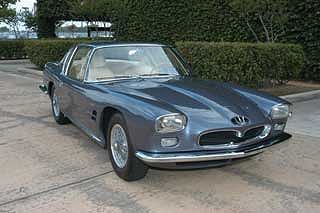 |
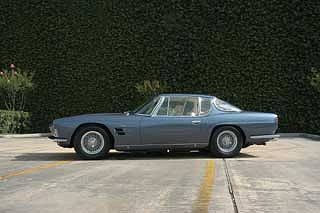 |
|
CHASSIS No AM103.060 325bhp 4,941cc single overhead camshaft Lucas mechanically fuel injected vee eight-cylinder engine, five-speed manual transmission, independent front
suspension with coil springs, live axle rear suspension with leaf springs, four-wheel hydraulically actuated disc brakes. Wheelbase 2,600mm (102.4") |
|
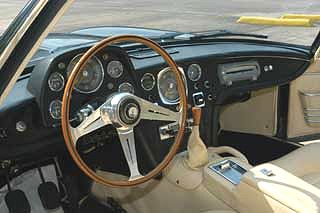 |
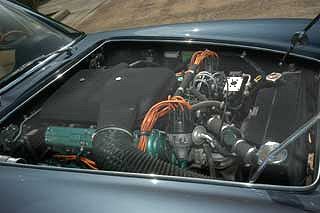 |
While the first two 5000 GTs were powered by engines directly derived from the 450S, Maserati recognized the short stroke four-Weber carburetor engines were in the longer run less than suitable for a gentleman negotiating the streets of Paris or Beverly Hills. For the second series, Maserati lengthened the stroke from 81 to 89mm and shrank the bore from 98.5 to 94mm to give 4,941cc displacement and a broader and more useful torque curve. Lucas mechanical fuel injection with carefully tailored fuel-air mixture calibrations replaced the first series' Weber carbs. Camshaft drive was changed from the 450S train of noisy spur gears to a quieter chain drive. The result was a more refined and tractable engine, but still with the capability of achieving nearly 170mph. |
|
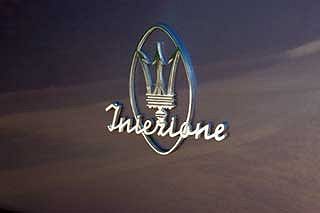 |
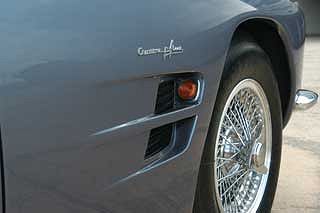 |
103.060 was delivered August 8, 1962 to Karim Aga Khan, spiritual leader of the Ismailis, a Shi'ite Muslim sect. Karim, who had succeeded his grandfather Mohammed as Imam in 1957, lived principally in France. Karim Aga Khan had exactly the style, flair and wealth that distinguished the owners of Maserati 5000 GTs. |
|
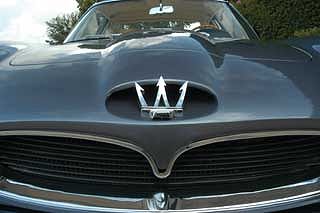 |
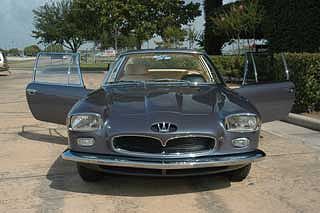 |
Inside, the Aga Khan's Maserati 5000 GT is luxuriously and distinctively appointed in cream leather, with liberal use of chrome trim that is characteristic of Pietro Frua's designs. The 300kph speedometer sits prominently in the middle of the dashboard where it isn't a distraction for the driver and also can impress passengers. In the dashboard in front of the passenger is an in-dash 45 rpm record player. As with other 5000 GTs, the Aga Khan's has Maserati's distinctive wood rimmed steering wheel with trident-shaped spokes. |
|
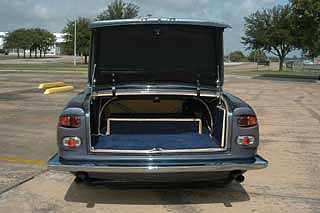 |
Subsequent to the repaint it has earned a second in class at Pebble Beach and is described, in common with the other Maseratis in Mr. Brener's collection, as running and driving very well. |
ESTIMATE US $350,000 - $450,000 / GB £230,000 - £300,000 (approx.) |
|
|
LOT 449 1967 Maserati Mexico Coupé with coachwork by FRUA. |
|
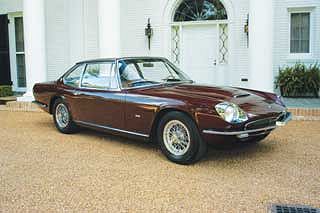 |
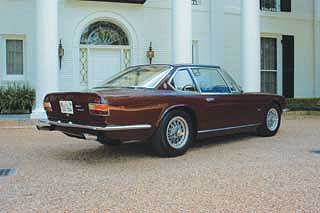 |
|
CHASSIS No AM112.001 270bhp 4,719cc. dual overhead camshaft vee eight-cylinder engine, five-speed manual transmission, independent front suspension with coil springs, live axle rear suspension with leaf springs, four-wheel hydraulically-actuated disc brakes. Wheelbase 2,640mm (103.9"). |
|
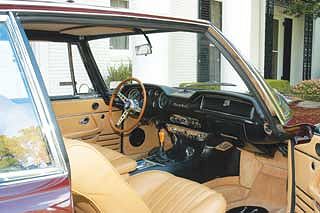 |
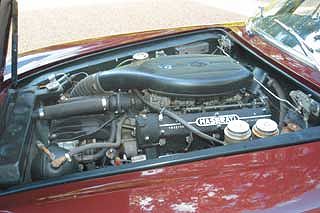 |
Suspension is independent at the front with a highly conventional solid rear axle suspended on leaf springs at the rear. The Italians have demonstrated over the years, however, an uncommon knack, apparently found only in the Mediterranean gene pool, for achieving a remarkable compromise between handling and ride with seemingly ordinary solid rear axles. It’s especially surprising because Maserati used an off-the-shelf Salisbury axle from England, which it shared with a number of cart-sprung British cars. How remarkable is Maserati’s accomplishment? None other than Innes Ireland, testing a Mexico for Autocar’s April 25, 1968 issue, nonchalantly remarked, "On a twisting, undulating country road the car was most exciting. The independent suspension all around took care of most of the bumps. Fast cornering produced very little roll." |
|
|
LOT 450 1962 Maserati 5000 GT Coupé with coachwork by ALLEMANO. |
|
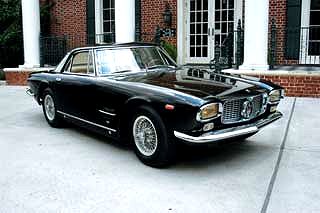 |
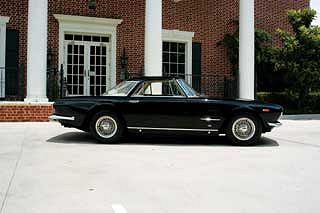 |
|
CHASSIS No AM103.054 325bhp 4,941cc. single overhead camshaft Lucas mechanically fuel injected vee eight-cylinder engine, five-speed manual transmission, independent front suspension with coil springs, live axle rear suspension with leaf springs, four-wheel hydraulically actuated disc brakes. Wheelbase 2,600mm (102.4"). |
|
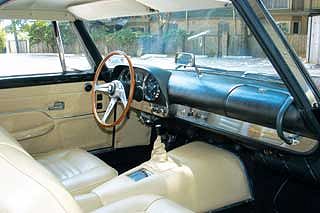 |
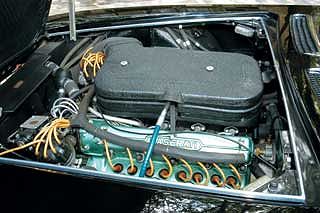 |
Maurice Khawam, in his exceptional book Maserati 5000 GT - A Significant Automobile, collected a number of owner's observations on their 5000 GTs. Jerry Wood, owner of Allemano coupé 103.034 observed, "The cars are masterfully engineered and are a real treat to drive. They all have tall gearing and seemingly endless acceleration in any gear.... Fourth gear never seems to run out of acceleration. One hundred and sixty plus miles an hour is cruising for this monster and it does it absolutely effortlessly." |
|
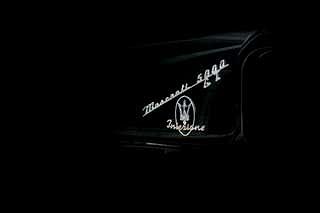 |
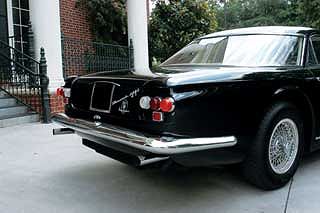 |
Matteo Panini observed about driving his 5000 GT Allemano coupé, "The important thing is not to get carried away. The 5000 GT must be driven with judgment and attention." |
|
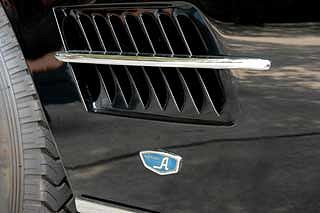 |
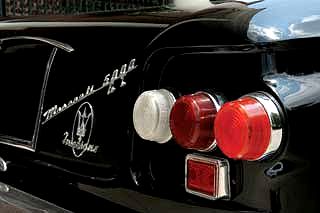 |
Mr. Alfredo Brener's 5000 GT Allemano coupé was first delivered on September 17, 1962 to Count Giuseppe Comola of Naples. Finished in black nitrocellulose lacquer with light beige interior, it has an Enrico Nardi wood rimmed steering wheel with Maserati's trident-pattern spokes. An older restoration by FAI, it has been displayed at the Pebble Beach Concours d'Elegance where it received the Most Elegant award. Its condition is described as mechanically very strong and, in common with all the consistently maintained automobiles in Mr. Brener's collection, driving very well. |
|
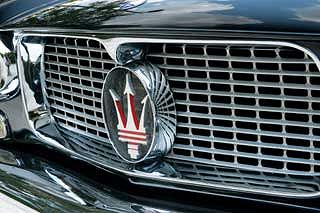 |
One of the greatest automobiles of the postwar period, and a worthy contender for the world's best gran turismo, this Maserati 5000 GT Allemano coupé will reward its next owner with breathtaking performance, refined elegance, exceptional style and rarity with the provenance of having come from the collection of Mr. Alfredo Brener, one of the world's most important collections of Maseratis. |
ESTIMATE US $175,000 - $225,000 / GB £116,000 - £149,000 (approx.) |
|
| NEXT PAGE: LOTS 451, 469 and 475. |
| BACK TO: LOTS 445, 446 and 447. |
 |
||
|
To enter Enrico's Maserati Pages CLICK HERE! Copyright: RM AUCTION INC. - © 2003. All rights reserved. |